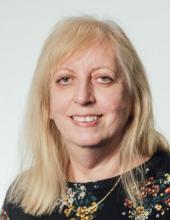Current projects
ANCODE (Applying nature-based coastal defence to the world's largest urban area – from science to practice, 2018–2021): In this project we are working with teams from the Netherlands and China. The UK team are studying processes affecting climate change in the Pearl River Delta, the world’s largest urban area, including the effect of changes in extreme typhoons and sea level rise. The aim is to understand if nature-based defences (mangroves and oyster reefs) can be used as part of a coastal protection system.
Commonwealth Marine Economies Programme: My team is working on Climate Change Impact Assessment for St. Vincent and the Grenadines (SVG), and Monitoring and Risk Assessment to Increase Climate Change Resilience, for the Caribbean Region. We are developing regional storm surge and wave models and downscaling these to model coastal change in St. Vincent, together with in situ wave measurements and training for in-country staff.
Recent Projects
SUCCESS (Synthesising Unprecedented Coastal Conditions: Extreme Storm Surges, 2017–2018): Modelling surges and waves from synthetic ‘worst-case’ storms.
EcoWatt2050 (2014–2017): This project aimed to understand the combined impact of climate change by 2050 with the effect of large arrays of offshore renewable energy device such as tidal turbines.
ESPA-Deltas (Assessing health, livelihoods, ecosystem services and poverty alleviation in populous deltas, 2012–2016): focusing on the Brahmaputra-Ganges-Meghna Delta in Bangladesh, this large-scale interdisciplinary project used complex biophysical models to produce a systems model for livelihoods of people living in absolute poverty in the coastal zone of Bangladesh. We built an FVCOM model of the BGM Delta.
ARCoES (Adaptation and Resilience of Coastal Energy Supply, 2013–2017): This project looks at the adaptation and resilience of coastal energy supply to coastal flooding.
Completed projects since 2008
EU FP7 RISES-AM- (Responses to coastal climate change: Innovative Strategies for high End Scenarios - Adaptation and Mitigation -, 2013–2016): This project addressed adaptation and resilience of the coast to climate change, especially looking at novel adaptation measures.
Scottish Shelf Model Development (2012–2016). This project implemented the FVCOM model for the whole NW European Shelf, focussing on Scottish Water, under the management of Marine Scotland Science for the Scottish Government.
FP7 FIELD_AC (2010–2012): This EU SPACE project addressed the downscaling of satellite observations for use in coastal operational oceanography, including coastal modelling and in-situ observatories.
COASTALT (2007–2011): This was a project on “Development of Radar Altimetry Data Processing in the Coastal Zone” funded by the European Space Agency (ESA/ESRIN contract 21201/08/I-LG) whose main objective was to contribute to the transition of pulse-limited coastal altimetry towards a mature, pre-operational status, by defining and testing new coastal radar altimeter products. I worked on validation of the wave products.
FORMOST (2008–2010): This project built on observational datasets collected in the Dee Estuary in North Wales/NW England, improving turbulence and sediment transport modelling.
UKCP09 Marine and Coastal Projections (2008–2009): Led by the Met Office for DEFRA, this report included wave model projections produced by the Tyndall Coastal Simulator project (see below).
OCEANS 2025 Theme 3 (2007–2012) Shelf and Coastal Processes: Led by Prof. Jonathan Sharples, then myself.
CoFEE project (2007–2010): This project looked at threats of coastal flooding on the Sefton coast. We provided offshore wave and water levels from the POLCOMS-WAM model.
Joule tidal energy project (2006–2009) ‘Tapping the Tidal Power Potential of the Eastern Irish Sea’. Led by Prof. Richard Burrows of Liverpool University this project studied the electricity generating potential of tidal barrages in NW England
Tyndall Coastal Simulator (2005–2008) This interdisciplinary project looked at the threat of climate change on the East Anglian coast. I provided offshore wave model projections.
Older projects
LEACOAST2 (Liverpool-East Anglia Coastal Study 2, 2004–2007): This project studied the sediment transport around the offshore breakwaters at Sea Palling on the Norfolk coast. I was responsible for managing part of the fieldwork programme.
Tyndall project ‘Towards a vulnerability assessment for the UK coastline’ (2001–2003)
Research grants
- 2018–2021 EPSRC Newton Fund, Sustainable Deltas programme: ANCODE, EP/R024537/1
- 2017–2018 NERC ERIIP: SUCCESS NE/P009158/1
- 2014–2017 EPSRC Supergen Marine Challenge 2: EcoWatt2050, EP/K012851/1
- 2013–2017 EPSRC ARCC: ARCoES, EP/I035390/1
- 2013–2016 EU-FP7 RISES-AM-, FP7-ENV-2013-Two-Stage-603396
- 2012–2016 NERC/ESRC/DfID ESPA-Deltas, NE/J002852/1
- 2010–2012 EU-FP7 FIELD_AC (Fluxes, Interactions and Environment at the Land-ocean interface. Downscaling, Assimilation and Coupling), FP7-SPACE-2009-1 no 242284
- 2008-2011 NERC Field Observations and Modelling of the Sediment Triad (FORMOST) NE/E015026/1
- 2007–2010 NERC FREE: Coastal Flooding by Extreme Events (CoFEE), NE/E002269/1
- 2005–2009 NERC Marine Biogeochemistry and Ecosystem Initiative in QUEST (MARQUEST), NE/C516128/1
- 2006–2008 NWDA/Joule Project, JIRP106/03
